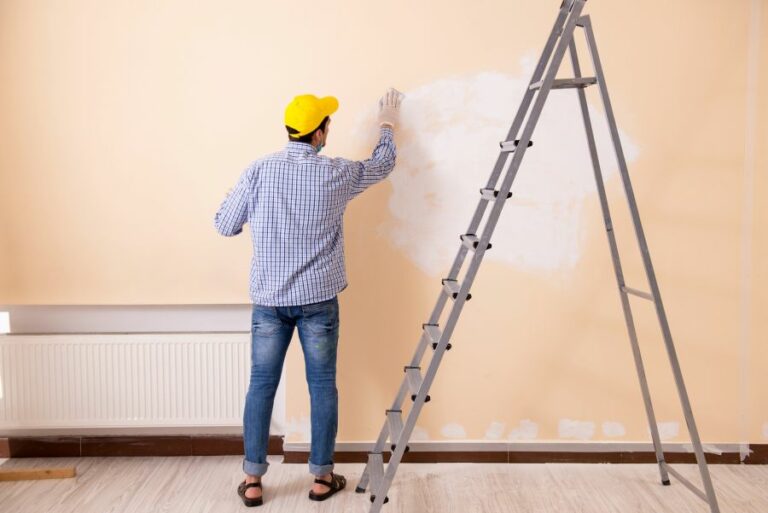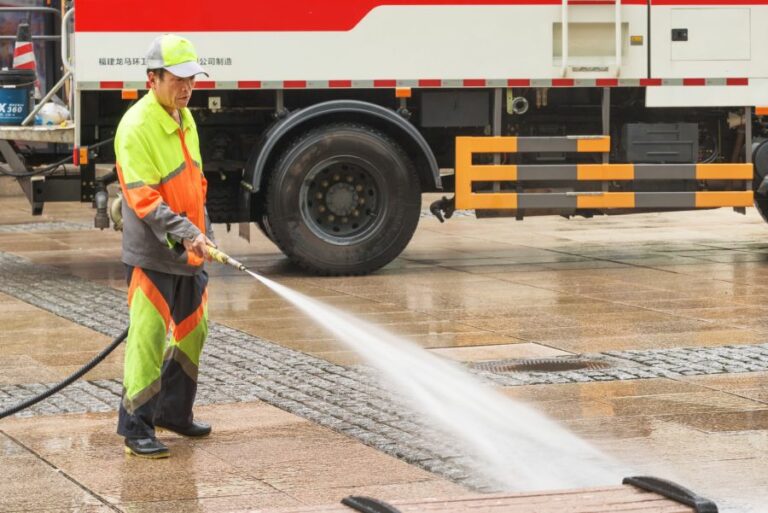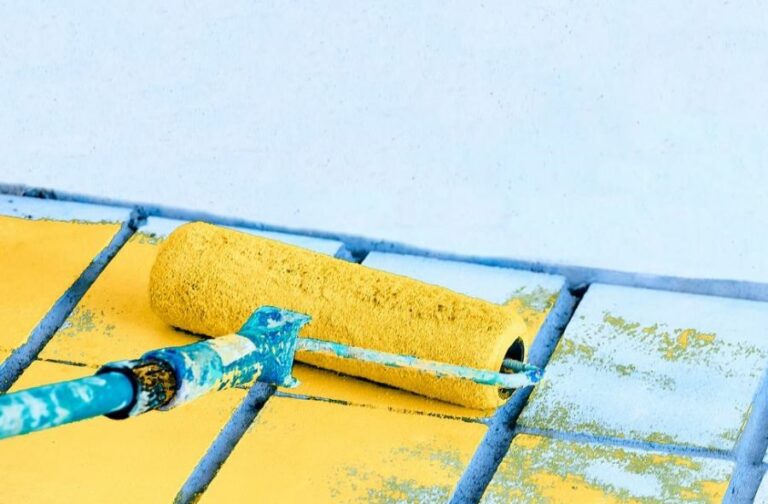Wire Brush Surface Cleaning Guide, 25 Things You Should Know
When it comes to wire brush surface cleaning, the task may initially seem daunting, but fear not! We have put together the ultimate guide to help you achieve the perfect clean and transform any surface. With our expertise by your side, you’ll master the right techniques and effectively remove rust, paint, or any other residue.
Wire brush surface cleaning guide:
Wire brush surface cleaning is vital in industries like automotive, aerospace, and manufacturing for removing dirt, rust, and contaminants. Available in various shapes, sizes, and types, such as steel, brass, or stainless steel, the right wire brush depends on the surface material and contamination extent. Key aspects include understanding brush types, preparing surfaces, using correct pressure and speed, and adhering to safety measures.

Discover the secrets behind effective wire brush surface cleaning in this comprehensive guide. Learn about different brush styles, proper techniques, and safety precautions. Don’t miss out on expert tips to make your surfaces shine like never before. Read on to elevate your cleaning game!
Contents
- 1 Comprehensive Guide to Wire Brush Surface Cleaning
- 2 Surfaces Suitable for Wire Brush Cleaning
- 3 Choosing the Right Wire Brush for Flat Surface Cleaning
- 4 Ideal Surfaces for Wire Brush Prepping: A Guide
- 5 Achieving a Perfect Wire Brush Finish: Tips & Techniques
Comprehensive Guide to Wire Brush Surface Cleaning
Wire brush surface cleaning is a crucial process in various industries, including automotive, aerospace, and manufacturing. It ensures surfaces are free from dirt, rust, and other contaminants, resulting in quality finished products.
• Understanding Wire Brushes
Wire brushes come in many shapes, sizes, and varieties, with different types of bristles, such as steel, brass, or stainless steel, each with its specific function. The choice of the right wire brush depends on the material of the surface that needs cleaning and the extent of the contamination.
– Steel Wire Brushes
Steel wire brushes are ideal for cleaning heavy rust and scale deposits on ferrous metals. They’re aggressive and durable, providing excellent removal without causing damage to the underlying material.
– Brass Wire Brushes
Brass wire brushes are a gentler option, suitable for use on softer or more sensitive surfaces such as copper, brass, and aluminum owing to their non-sparking and non-marring qualities.
– Stainless Steel Wire Brushes
Stainless steel wire brushes are corrosion-resistant and perfect for cleaning stainless steel, aluminum, and other non-ferrous metals without causing cross-contamination.
• Types of Wire Brushes
Wire brushes come in various forms, including handheld, wheel, and cup brushes, each catering to different cleaning applications.
– Handheld Wire Brushes
Handheld wire brushes are simple, manual tools used for general-purpose cleaning. They’re ideal for small-scale jobs, such as removing rust or paint from metal surfaces.
– Wire Wheel Brushes
Wire wheel brushes attach to power tools like angle grinders or bench grinders, enabling faster and more efficient cleaning. They’re suitable for cleaning large areas or reaching tight spots where a handheld brush may be difficult to maneuver.
– Wire Cup Brushes
Wire cup brushes also attach to power tools and are used for more aggressive cleaning tasks, such as removing weld spatter, heavy rust, or scale. The cup shape allows for better control, producing a consistent finish.
• Preparing the Surface
Before starting the wire brush cleaning process, it is crucial to prepare the surface to ensure optimal results. Below are some essential steps to follow:
- Assess the surface for contaminants like dirt, grease, or oil, and remove them using appropriate cleaning methods.
- Choose the correct wire brush for the surface material and the nature of the contaminant.
- Put on safety gear, such as gloves, safety glasses, and a face mask, to protect yourself during the cleaning process.
• Wire Brush Cleaning Techniques
Here are some expert recommendations for effectively using wire brushes for surface cleaning:
– Use the Correct Pressure
When using a wire brush, applying excessive force can damage the bristles and shorten the tool’s lifespan. Instead, maintain steady and moderate pressure throughout the cleaning process, allowing the bristles to perform optimally.
– Maintain Brush Speed
When using a wire brush attachment with a power tool, ensure the speed is suitable for the surface material and the brush type.
Generally, lower speeds are recommended for softer metals, and higher speeds can be used for harder metals. Adhering to the manufacturer’s guidelines is always recommended.
– Clean in a Consistent Direction
To achieve a uniform finish, clean the surface in a consistent direction with overlapping strokes. Use a systematic approach, working on small sections before moving to the next.
– Use Preventive Measures
To prolong the lifespan of wire brushes, take preventive measures like cleaning the brushes after use and drying them to prevent corrosion. Store them in a clean and dry environment to maintain their effectiveness.
• Safety Considerations
As with any cleaning method, using wire brushes also entails certain safety risks. Here are some essential safety considerations to keep in mind during the process:
- Always wear appropriate personal protective equipment (PPE), such as gloves, safety glasses, and a dust mask, to minimize potential hazards.
- Make sure your power tools are in good working order, with all safety features functional, such as guards and trigger locks.
- When using power tools, ensure the correct wire brush attachment is securely fitted to prevent dislodging and causing injury.
• Further Resources
For additional information on selecting the right wire brush, proper cleaning techniques, and safety, visit the American Welding Society’s website. Their resources provide valuable educational content and industry best practices relating to surface cleaning and welding.
By following the expert advice and recommendations in this wire brush surface cleaning guide, you can ensure optimal results, prolong the lifespan of your wire brushes, and maintain a safe working environment.
Surfaces Suitable for Wire Brush Cleaning
Wire brushes are a versatile and valuable tool that can be used for a wide range of cleaning tasks. Whether you need to remove rust, paint, or other stubborn materials, wire brushes offer the strength and durability to handle even the toughest jobs.
• Removing Rust and Corrosion
One of the most common uses of a wire brush is to remove rust from metal surfaces. Rust can weaken and damage the structure of metals over time, so it is essential to clear it away to prevent further damage.
Wire brushes are an excellent choice for this task, as their strong bristles can efficiently get rid of rust without damaging the underlying metal.
I recommend using a narrow wire brush to access tight corners and crevices where rust may accumulate. Be sure to prepare your work area by laying down a protective cover to catch any rust particles that may fall during the cleaning process.
• Stripping Paint from Surfaces
Another common application for wire brushes is stripping paint from surfaces. Whether you need to prepare a surface for repainting or just remove old, peeling paint, a wire brush can provide a thorough and efficient cleaning.
For larger surfaces, a wire brush attachment for a power drill can speed up the process considerably. Be sure to don appropriate safety gear, such as goggles and gloves, before attempting to strip paint.
If you need assistance in choosing the right type of wire brush, the American Brush Manufacturers Association offers valuable information and resources.
• Cleaning Grills and Ovens
Wire brushes are an effective tool for cleaning grills and ovens. The strong bristles can easily remove stubborn grease, burnt-on food particles, and other debris that accumulates over time.
For the best results, use a wire brush specifically designed for grill cleaning, as these brushes often have more rigid bristles. Be sure to let your grill cool down before you begin the cleaning process, and protect yourself by wearing heat-resistant gloves.
Remember to clean your grill regularly to maintain optimal cooking performance and prevent flare-ups.
• Removing Mold and Mildew
Mold and mildew can cause significant damage to surfaces and materials if left untreated. Wire brushes can help remove these substances from various surfaces such as wood, concrete, and even some types of siding.
However, be cautious when cleaning delicate surfaces with a wire brush, as the bristles’ strength can potentially cause damage. I recommend testing a small area first or alternatively using a softer brush if necessary.
Always wear protective gear when working with mold and mildew, and clean the area thoroughly with a bleach solution afterward to prevent regrowth.
• Cleaning Masonry and Concrete
Wire brushes are ideal for cleaning various masonry and concrete surfaces, such as brick, stone, and stucco. They can be used to remove dirt, efflorescence (white salt deposits), and even algae or moss buildup.
For significant areas, consider using a wire brush attachment for a pressure washer, making cleaning large surfaces more efficient. Be aware that pressure washing can damage some surfaces, so proceed with caution and test a small area first if you are uncertain about the surface’s durability.
• Maintaining Garden Tools
Keeping your garden tools clean and free from rust or other debris can extend their lifespan and improve their performance. Wire brushes are perfect for cleaning and maintaining various garden tools, such as shears, spades, trowels, and more.
Use a narrow wire brush to clean tight spaces and joints, and consider applying a thin layer of protective oil to metal surfaces once clean to prevent further rust development.
• Final Thoughts
Wire brushes are an invaluable tool for a wide range of cleaning applications. From removing rust and paint to cleaning grills and masonry, wire brushes offer durability and strength to tackle even the toughest jobs.
By following the expert recommendations outlined in this guide, you can ensure you are using the right techniques and tools to achieve optimal cleaning results and extend the life of your belongings.
| Surfaces Suitable for Wire Brush Cleaning |
|---|
| Grill grates |
| Rust from metal surfaces |
| Paint from surfaces |
| Concrete |
| Stains from brick or stone |
| Heavy dirt and debris from surfaces |
Choosing the Right Wire Brush for Flat Surface Cleaning
• Introduction to Wire Brushes
Wire brushes are essential tools for cleaning and polishing various types of surfaces, including flat ones. They are generally used to remove dirt, corrosion, paint, and other forms of stubborn debris from a wide range of materials.
Choosing the right wire brush for cleaning a flat surface is crucial to achieving the best possible results and avoiding unnecessary damage to the surface.
• Wire Brush Materials
– Brass Wire Brushes
Brass wire brushes are a popular choice for cleaning and polishing softer materials like brass, copper, aluminum, or bronze. They can effectively remove debris without causing any damage to the surface being cleaned.
Since brass is a non-sparking material, these brushes can safely be used in environments with a risk of explosion or where flammable substances are present.
– Stainless Steel Wire Brushes
Stainless steel wire brushes are highly durable and resistant to corrosion and rust. They are suitable for cleaning hard surfaces like stainless steel, iron, and other tough materials. These brushes can effectively remove rust, paint, and other debris from both flat and uneven surfaces.
– Carbon Steel Wire Brushes
Carbon steel wire brushes are ideal for aggressive cleaning and restoration projects, as they offer excellent cutting and scraping capabilities.
These brushes are suitable for use on hard surfaces like cast iron, steel, or stone and are perfect for removing rust, scale, paint, and other forms of stubborn debris.
• Types of Wire Brushes
– Cup Brushes
Cup brushes are designed with a cup-shaped base that holds the wire bristles. These types of brushes are incredibly versatile and can be used for cleaning a wide range of materials and surfaces.
Cup brushes work efficiently on large flat surfaces and ensure an even clean. They can be used with power tools like angle grinders for efficient and fast cleaning.
– End Brushes
End brushes, also known as pencil brushes, are designed with wire bristles on a narrow end that resembles a pencil. These brushes are ideal for precision cleaning and reaching tight spaces and corners.
However, due to their small size, they are not recommended for cleaning large flat surfaces.
– Wheel Brushes
Wheel brushes feature wire bristles arranged around the circumference of a circular base. They are perfect for cleaning flat surfaces, as they cover a larger area and provide an even clean.
Wheel brushes can be used with power tools like drills or bench grinders to achieve a smooth, polished finish.
• Factors to Consider When Choosing a Wire Brush for Cleaning Flat Surfaces
– Surface Material
The first factor to consider when choosing a wire brush for cleaning a flat surface is the material of the surface itself. The brush material should be softer than the surface being cleaned to avoid causing any abrasion or damage.
For example, use a brass wire brush for softer materials like brass, copper, or aluminum, and opt for a stainless steel or carbon steel brush for harder materials like steel, iron, or stone.
– Level of Debris
The type and level of debris present on the surface will help determine the right wire brush for the job. If the debris consists of light dirt or dust, a softer wire brush, like a brass-bristle brush, should be sufficient.
For heavier debris, like rust, paint, or scale, a more aggressive wire brush, like stainless steel or carbon steel, may be necessary.
– Safety Measures
When choosing a wire brush for cleaning a flat surface, safety is paramount. Always ensure that the brush is securely attached to the power tool, such as a drill or angle grinder, and wear safety gear like gloves and eyewear to protect against flying debris.
It is also essential to adhere to the correct brush and tool guidelines for safety, as prescribed by the Occupational Safety and Health Administration.
• Conclusion and Recommendations
In conclusion, choosing the right wire brush for cleaning a flat surface depends on the surface material, the level of debris, and the desired outcome. Based on personal experience, we recommend the following:
- For cleaning softer materials like brass, copper, aluminum, or bronze, opt for a brass wire brush to prevent damage to the surface.
- For cleaning harder materials like steel, iron, or stone, choose a stainless steel or carbon steel brush for optimal results.
- When considering the type of brush, wheel brushes, and cup brushes are generally the best options for cleaning flat surfaces, as they offer an even clean and can be used with power tools for efficiency.
Always remember to prioritize safety when using wire brushes for cleaning and follow the guidelines prescribed by the Occupational Safety and Health Administration to ensure a successful and safe cleaning process.
| Type of Wire BrushFlat Surface MaterialRecommended for Cleaning | ||
|---|---|---|
| Stainless Steel Wire Brush | Metal | Yes |
| Brass Wire Brush | Wood, Metal | Yes |
| Nylon Wire Brush | Plastic, Wood, Glass | Yes |
Ideal Surfaces for Wire Brush Prepping: A Guide
When it comes to prepping surfaces for various projects, the wire brush is a key tool in any professional or DIY enthusiast’s arsenal.
• Wire Brush: A Multi-Functional Tool
The wire brush is an extremely versatile tool that can be utilized for various activities, including cleaning, surface preparation, and paint removal. Wire brushes come in various forms, such as handheld brushes, attachment brushes for power drills, or rotary wire wheels for angle grinders.
– Surfaces Perfect for Wire Brush Prepping
There are several surfaces where wire brushes are the best tool for prepping, including:
- Metal Surfaces: The wire brush is the ideal tool for removing rust, scale, and paint from metal surfaces. It is also an excellent tool for cleaning welding joints and spatter. For these tasks, use a carbon steel wire brush for ferrous metals (iron, steel) or a stainless steel wire brush for non-ferrous metals (aluminum, copper, brass).
- Concrete and Masonry Surfaces: Wire brushes work well in removing old paint, mold, and mildew from concrete and masonry surfaces, preparing them for sealing or painting. A wire brush attachment for an angle grinder or an electric wire brush machine can be used for larger surface areas.
- Wooden Surfaces: For wooden surfaces like decks, fences, or outdoor furniture, wire brushes efficiently remove flaking paint, algae, and mildew. These brushes are also perfect for restoring the texture of the wood grain by eliminating accumulated dirt and grime.
- Textured Surfaces: Certain surfaces, such as textured ceilings or stucco exteriors, may have grooves and crevices that are difficult to access with other tools. A wire brush is proficient at reaching into these tight spaces, efficiently dislodging debris, and making surface preparation more effective.
– Advantages of Using a Wire Brush for Surface Prepping
Utilizing a wire brush for surface prepping offers several benefits:
- Efficient Removal: Wire brushes are highly effective at removing rust, paint, and other contaminants from surfaces, making them the optimal choice for prepping.
- Time-Saving: Wire brushes significantly speed up the surface preparation process compared to other methods, such as sanding or scraping.
- Versatility: As mentioned earlier, wire brushes can effectively prepare surfaces made of metal, concrete, wood, and other materials.
- Cost-Effective: Wire brushes are generally an inexpensive tool, making them an affordable choice for those looking to achieve professional surface preparation on a budget.
– Expert Tips for Optimal Results
Follow these expert tips to ensure optimal results when using a wire brush for surface preparation:
- Choose the Right Brush: Select the appropriate wire brush according to the material being prepped. For instance, use carbon steel wire brushes on ferrous metals and stainless steel wire brushes on non-ferrous metals.
- Safety Precautions: Always wear appropriate safety gear, such as safety glasses, gloves, and a dust mask or respirator, when using wire brushes to prevent injury and protect yourself from harmful debris.
- Proper Technique: When using a wire brush, apply consistent pressure while maintaining a steady motion across the surface, ensuring that an even and thorough preparation is achieved.
- Clean the Surface: After prepping the surface with a wire brush, ensure that the surface is cleaned thoroughly. This can be done using a vacuum or a damp cloth, depending on the surface material.
- Treat the Surface: If you are prepping a rust-prone metal surface, consider treating it with a rust-conversion primer to prevent future corrosion.
To learn more about the benefits and techniques of using a wire brush for surface prepping, refer to the University of Maine’s educational resources related to surface preparation.
In conclusion, the wire brush is a highly versatile and efficient tool that should be on hand for any surface preparation job.
By understanding the best surfaces for wire brush prepping and applying expert tips and techniques, you can effectively prep and restore surfaces with ease, ensuring a professional finish for any project.
Surface Type | Is Wire Brush Ideal for Prepping? |
|---|---|
Metal | Yes |
Wood | Yes |
Concrete | Yes |
Plastic | No |
Glass | No |
Fabric | No |
Achieving a Perfect Wire Brush Finish: Tips & Techniques
A wire brush finish, often referred to as a brushed finish, is a popular technique used across a variety of industries and applications, such as in metalworking, woodworking, automotive detailing, and even in artistic projects.
This finish creates a distinctive look and texture on various surfaces while often improving durability and corrosion resistance and reducing glare.
• Choosing the Right Wire Brush
To execute a wire brush finish, it is crucial to select the appropriate wire brush for your specific project. Wire brushes come in various shapes, sizes, and materials, each designed for specific applications.
– Types of Wire Brushes
1. Manual Wire Brushes
These are handheld brushes, perfect for smaller projects or hard-to-reach areas. They offer excellent control and precision, especially when working on delicate or intricate surfaces. Manual brushes are available in different shapes, such as scratch brushes or toothbrush-style brushes.
2. Power-Driven Wire Brushes
These brushes are designed for use with power tools, such as drills, angle grinders, and die grinders. These brushes are suitable for larger-scale projects and offer rapid material removal and time efficiency.
– Wire Material
Choosing the right wire material is crucial, as this can impact the final finish, as well as the longevity and performance of the brush. Common wire materials are:
- Steel: Ideal for a variety of applications, including general cleaning, deburring, and surface preparation. These brushes are suitable for use on metals such as iron, steel, and aluminum.
- Brass: Suitable for softer materials, such as brass, copper, or wood, to prevent scratching or gouging.
- Stainless Steel: Offers increased corrosion and heat resistance, making it perfect for use in high-temperature environments or with materials prone to rusting.
- Nylon: Ideal for delicate surfaces, nylon brushes are often embedded with abrasive grit to aid in material removal while minimizing the risk of damaging the surface.
For a comprehensive guide on selecting the right wire brush for your specific application, the American Brush Manufacturers Association offers an excellent resource on their website.
• Preparing the Surface
Before applying a wire brush finish, ensure the surface is clean and free from contaminants, such as dirt, grease, or paint, to achieve the best possible finish. You can use cleaning agents, solvents, or preliminary sanding to prepare the surface.
• Achieving the Wire Brush Finish
Once you have chosen the appropriate wire brush and prepared the surface, you can proceed with executing the wire brush finish by following these guidelines:
– Manual Wire Brush Technique
- Secure the workpiece: It is vital to secure the workpiece to prevent any accidents or errors during the brushing process.
- Apply even pressure: Using a firm, even pressure throughout the process ensures a consistent finish. Over-applying pressure can risk damaging both the workpiece and the brush.
- Brush in a consistent direction: To achieve a uniform appearance, always brush parallel to the ‘grain,’ moving in straight lines across the surface.
- Inspect regularly: Frequently inspect the workpiece during the process, checking for inconsistencies or missed areas and adjusting your technique accordingly.
– Power-Driven Wire Brush Technique
- Ensure safety: When using power tools, always ensure you are wearing the necessary protective gear, such as safety glasses and gloves.
- Select the appropriate brush attachment: Attach the correct wire brush to your chosen power tool, ensuring it is compatible and secure.
- Test on scrap material: Experiment on a spare piece of material similar to your workpiece to gauge the appropriate speed and pressure needed for your desired finish.
- Apply even pressure and consistent speed: Use a steady hand to apply consistent pressure and maintain the tool speed for an even finish.
- Move in the direction of the brush rotation: Always move the power tool in the direction of the brush rotation, parallel to the grain of the material, to avoid scoring or damaging the surface.
• Post-Finishing Steps
Once the wire brush finish has been achieved, you may choose to apply additional surface treatments, such as painting, polishing, or protective coatings. Always ensure the surface is clean and adequately prepared for any subsequent applications.
• Final Thoughts
A wire brush finish is an effective and versatile technique for improving the appearance, durability, and corrosion resistance of various surfaces.
By selecting the appropriate wire brush, preparing the surface effectively, and following the provided guidelines, you can achieve a professional wire brush finish that enhances the overall characteristics and aesthetics of your project.
Step | Description |
|---|---|
1 | Choose a wire brush: Select a wire brush depending on the size and material of your workpiece. |
2 | Clean the surface: Ensure the surface to be brushed is clean, dry, and free of any dust, dirt, and debris. |
3 | Secure the workpiece: Use clamps or other work-holding tools to secure the workpiece to a stable surface. |
4 | Apply even pressure: Hold the wire brush firmly and apply even pressure while brushing to create a consistent finish. |
5 | Brush in one direction: Brush the surface in one direction to create a uniform finish along the grain of the material. |
6 | Inspect the finish: Periodically check the finish to ensure it is even and as desired. Adjust pressure and brushing technique as needed. |
7 | Clean the surface: Once the desired finish is achieved, clean the surface with a cloth or air blower to remove any remaining debris. |







